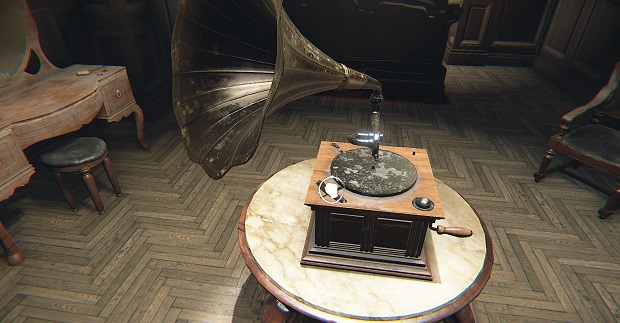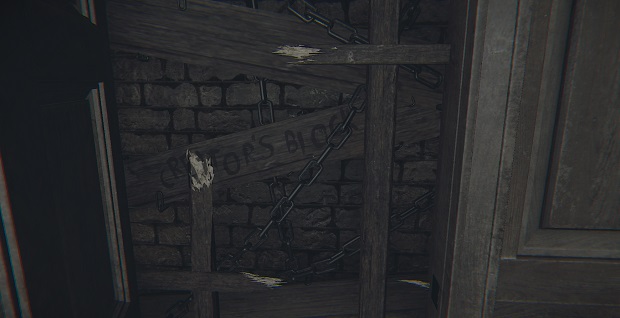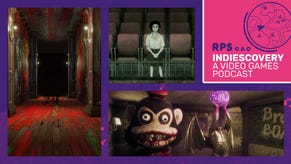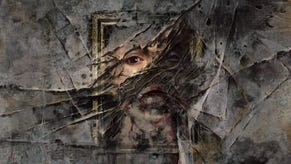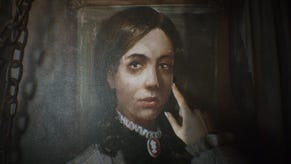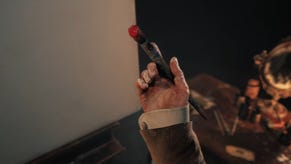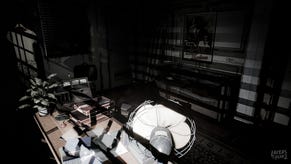Wot I Think: Layers Of Fear
Self Portr-hate
Every corridor and room in Layers of Fear [official site] has something frightening hiding in its recesses. It might be an apparition, head rattling like an escapee from Jacob's Ladder, or a piece of furniture that is preparing to launch itself across the room like the toy thrown from a poltergeist's pram. The story of a painter attempting to overcome a creative block as he seeks to finish a masterpiece, it crept out of Early Access this week. Here's wot I think.
This is a game that will startle and unsettle you consistently throughout its brief running time (I clocked three and a half hours, after some experience with Early Access versions) and it'll do so in ways both inventive and predictable. It's an artfully crafted haunted house that plays a little like a ghost train, firmly affixed to its tracks and designed to direct your attention toward all of the ghouls, gore and ghosts as and when they emerge.
The opening, which sees the painter-protagonist returning home to an empty, creaking house of latent horrors, might convince you that this is a first-person adventure, based around hub areas with items to collect and puzzles to solve. Even that sense of limited freedom soon evaporates, however, as the house transforms into a series of troubling locations that overlap, intertwine and confuse the layout of the house. There are objects to collect but there is no inventory to manage and I'm not sure the few difficulties I met can be described as puzzles. Misunderstandings, perhaps, when I failed to see the object I needed to interact with for a moment or two.
When the nightmarish architectural impossibilities begin, barely five minutes into the game, the story fades into the background. There are hints as to what has occurred to trigger this state – the brilliantly realised limping motion of the character, an obsession with vermin infestation, a portrait made of human parts – but for every meaningful image or event, there are plenty of bumps in the night that exist simply to make a loud noise at just the right time.
And that's fine. Layers of Fear sets out to provide spaces within which you feel unsafe and doors that you'd rather not open, and it has both of those things in abundance. Sometimes you'll hesitate to open a door because something has been rattling the handle and you'd really rather not stand face to face with whatever that is, and sometimes you might even decide it'd be best to quit the game and have a mug of hot chocolate because whatever is around the next corner is likely to make you extremely unhappy.
The problems are twofold. First of all, the shocks and scares are so densely packed that there's very little time to build feelings of apprehension and dread. Alfred Hitchcock knew a thing or too about tension and Layers of Fear reminded me of his explanation of the difference between suspense and surprise. If you haven't heard this before, it's worth reading in full:
We are now having a very innocent little chat. Let's suppose that there is a bomb underneath this table between us. Nothing happens, and then all of a sudden, "Boom!" There is an explosion. The public is surprised, but prior to this surprise, it has seen an absolutely ordinary scene, of no special consequence. Now, let us take a suspense situation. The bomb is underneath the table and the public knows it, probably because they have seen the anarchist place it there. The public is aware the bomb is going to explode at one o'clock and there is a clock in the decor. The public can see that it is a quarter to one. In these conditions, the same innocuous conversation becomes fascinating because the public is participating in the scene. The audience is longing to warn the characters on the screen: "You shouldn't be talking about such trivial matters. There is a bomb beneath you and it is about to explode!
In the first case we have given the public fifteen seconds of surprise at the moment of the explosion. In the second we have provided them with fifteen minutes of suspense.
While effective horror and effective suspense are not entirely the same, the creation and careful manipulation of dread has similarities to the effective structure of a suspenseful scenario. In the case of Layers of Fear, the opening minutes serve to warn us that something is wrong in this house and, indeed, that something is wrong with this person that we are playing as.
The bomb is ticking.
Within minutes it has exploded in a splash of colour and sound. Rather than seeding new sources of fear with their own build toward a horrifying reveal, the game then becomes a chain reaction of fresh explosions as doors slam, phantoms sob and dolls twitch. The pacing doesn't leave enough quiet time and it's notable that the few moments of calm left me squirming more than the parade of terrors, to which I quickly became immune. Eventually, I fell into treating some of the more excessive scare tactics as comic relief, simply because my brain seemed to require a more varied set or responses.
The second problem relates to the actual nature of the things that occur within the rooms and corridors of Mr Painter's impossible house. Works of art will occasionally do unsettling things, such as appearing where you don't expect them to be or melting into a pile of goo, but between the rats and the dolls and the cruel creative blocks and even crueller creative Dyno-Rods, there is some kind of story to unpick.
It's about a man and his relationship to beauty, both on the canvas and in the flesh. At least that's what I think it's about but I'm not sure where half of the game fits with that theory. It doesn't have to fit together like a perfect puzzle box, but my favourite horror games and films explore the limits of a central idea, making sense of something awful in a way that is often both terrifying and cathartic.
Layers of Fear is an effective scare 'em up but the sense of dislocation and the lack of character development left me feeling as if I'd enjoyed a thematically messy series of shocks rather than a cohesive horror story. It's a collection of scary things that are tangentially related to the idea of creative blocks and familial cruelty rather than an exploration of the artist or his personality flaws. By the time the credits rolled, I knew very little about this particular painter that I couldn't have learned by reading a brief synopsis.
Like the game itself, he appears to have an appreciation for the uncomfortable overlap of horror and beauty, but this night of discombobulated terrors feels like a collection of spooky scrapbook clippings rather than a magnum opus.
Layers of Fear is out now for Windows.





